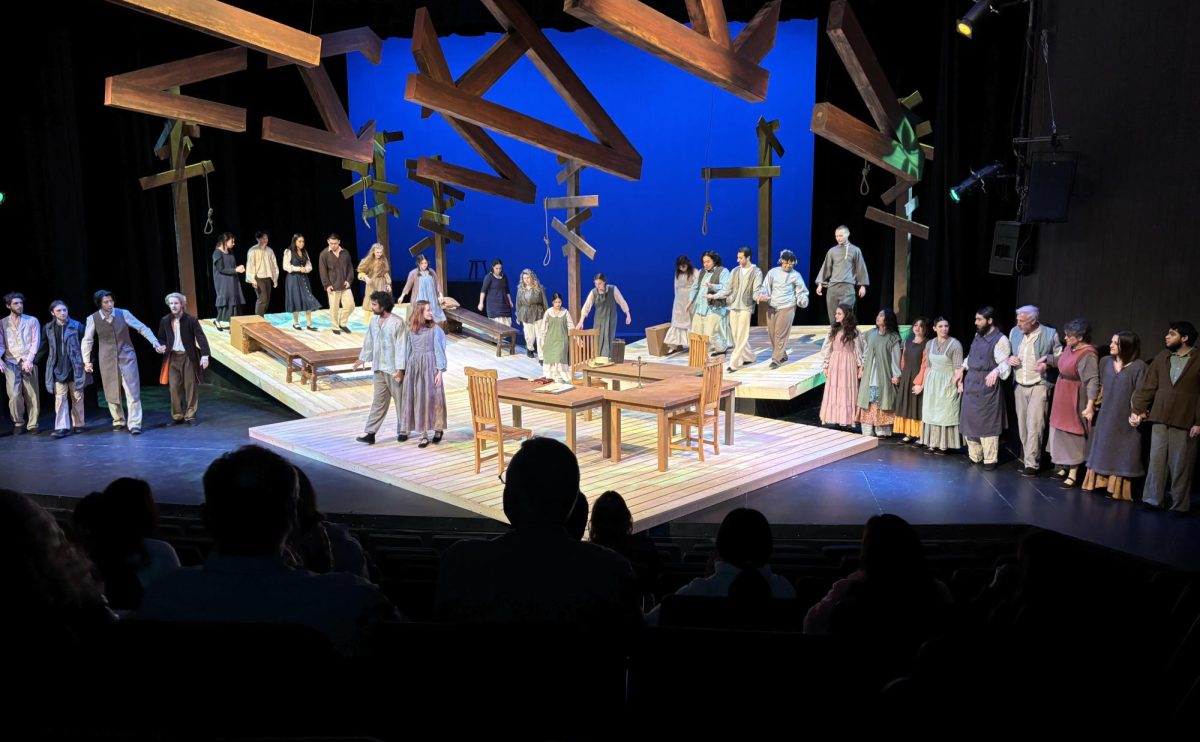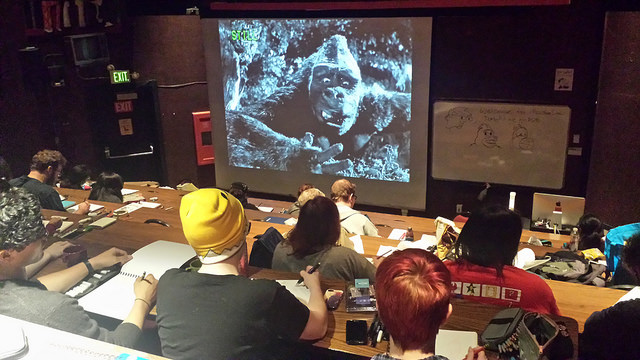DVC artists “Go Ape” at monster draw
Diablo Valley College students drawing a still frame of King Kong
October 11, 2016
The eighth wonder of the world thundered onto a big screen at Diablo Valley College on Friday, Sept. 30th, as Arthur King, DVC art instructor, explained the history of monster movies. Fittingly enough, the theme was “Going Ape.”
Before the feature began, King discussed the origins and development of traditional monster movies and stories.
One tradition that older movies had — similar to live theater — is that they played overture music before the performance to inform the audience that the show was about to begin.
King talked about the underlying themes and critiques that monster movies tend to address and the inspirations behind them.
King also pointed out the interesting and different ways Hollywood has portrayed the great monsters and apes of years past: from monster suits and prosthetics, to animatronics.
Certain actors were designated to being the gorillas. Charles Gemora, one of such actors from the 1930s, was a constant gorilla suit actor appearing in the Laurel and Hardy movies and “Murders in the Rue Morgue.”
The medium evolved, however, and the climate changed from animatronics shown in “King Kong,” to suits in “Murders in the Rue Morgue” and finally into prosthetics like in “Planet of the Apes.”
Another typecast was actress Fay Wray, who was coined as the original “Scream Queen,” as she was known for her blood curdling scream in monster movies.
“King Kong” was the primary example of animatronics and stop motion back in 1933.
“If you watch the movie, you would actually notice two versions of the monster,” King said, “The scary far away and the closeup comical.” King then showed the bust of King Kong in a still from the production of the original 1933 film.
Throughout the viewing, King paused the film as requested so students could draw the stilled frame.
King advised students to “start out loose, and then get specific.”
The still showed the armless head and chest of a giant ape with a goofy grin on his face. Scenes like this were used to help humanize the monster and at times make the audience sympathize with the creature. The students at the event even reacted with a sympathetic “aww,” in unison, as Kong got hurt and appeared sad as he stared at his injured hand.
When asked why King hosts these monster draw events, he responded, “It’s an excuse to create conversation among students.”
King stated that this is a great way for students to share lore and stories, and to keep these older stories alive and pass them on. They bring awareness to the constant re-imagining of iconic monsters like “Godzilla” and “King Kong,” among other Universal Monsters.
“This event has been going on for about five or six years now,” said King, and he plans to continue it to keep the tradition going.








































































